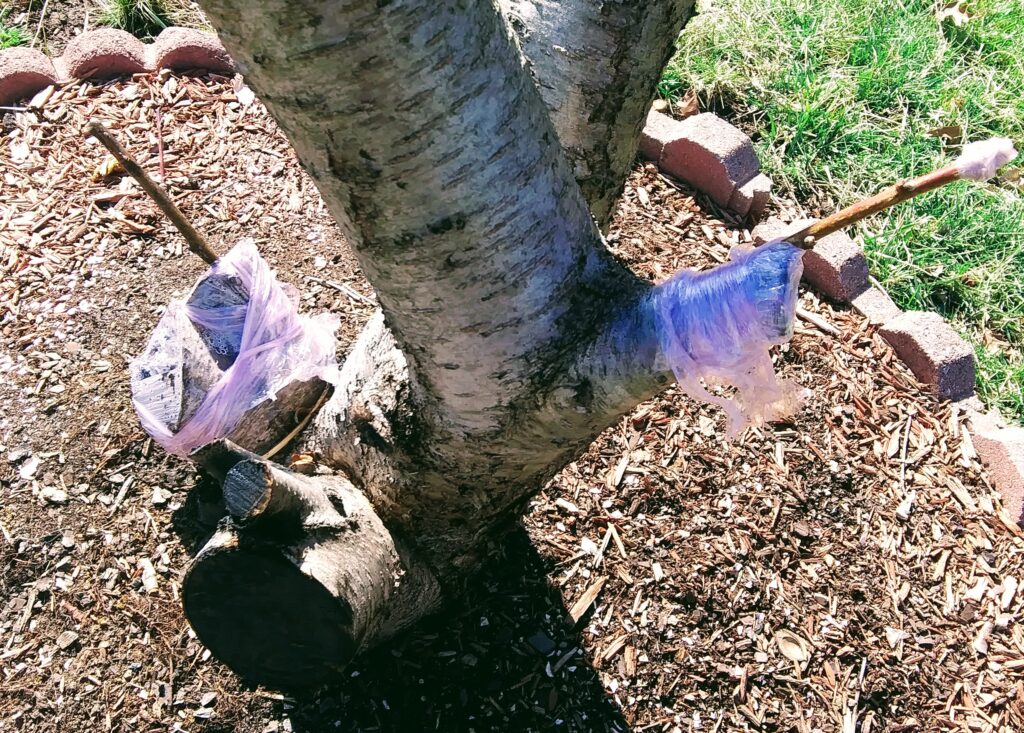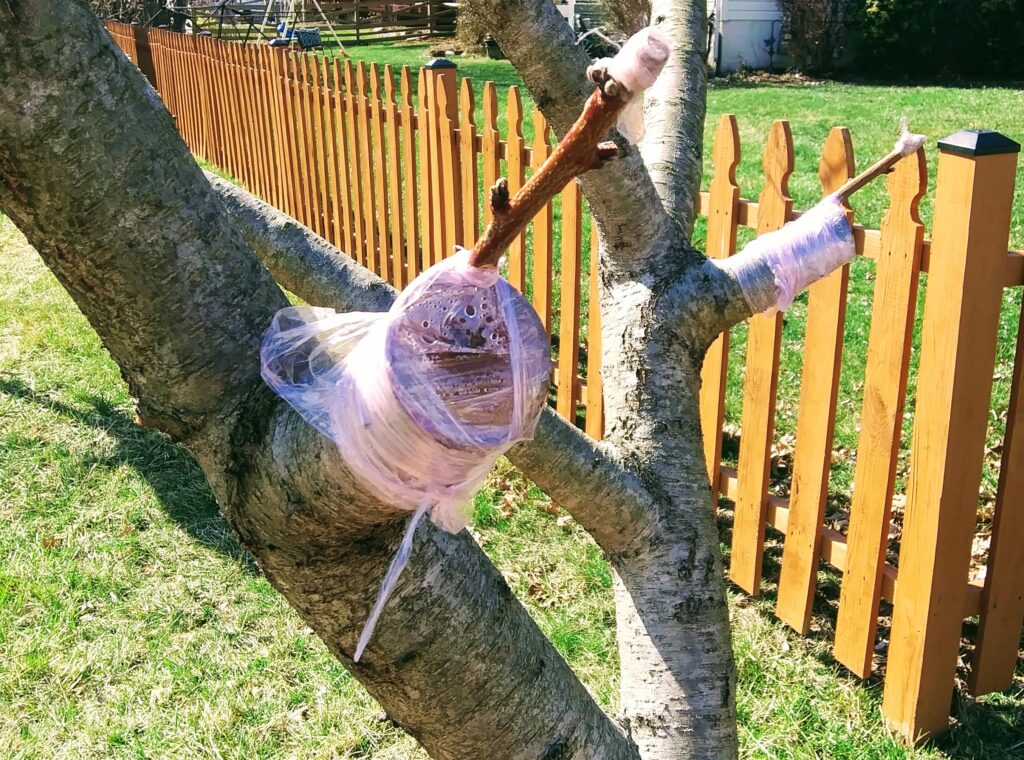While walking in the neighborhood, I noted a fruit tree grafting. I believe this is a pear tree.
Fruit Tree Grafting
Since this is a vast topic, I did more online research on fruit tree grafting.
For starters, if properly grafted one tree can grow several varieties of fruit. For example, tree grafting could result in a plum, apricot and peach tree.
However, for the best chance for success, graft together two of same types of fruit trees such as an apple tree to an apple tree and do it in the spring time.

The lower part of the tree is called the rootstock. The top part is called the graft or the scion. For the graft to flourish, the rootstock and the scion wood needs to be compatible.
Bark Grafting Technique
It looks like the owner is using a bark grafting technique where the scion is placed under the bark. The cambium of both the rootstock and the graft need to touch for the new branch to grow.

Cover the grafting entry area with some type of grafting tape to prevent moisture or rain from entering at that point.
Saving a Fruit Tree
Kuddos to the owner of this tree for taking the time to graft the tree. Most people would have dug up the tree and got something else.
Apparently the tree’s rootstock does well in our temperature zone and was worth saving.
Ending Remarks for Fruit Tree Grafting Blog
I guess for now, Farmhouse Magic Blog will walk by that same tree in two to three years because only time will tell if the new grafts will grow.
I wonder if I will see another pear tree, plum tree, apricot tree or something else?
But this is the magic of grafting, time, and nature.

Happy Spring Gardening!
Orchardpeople.com and Wikipedia online sources were used to research today’s blog topic.

